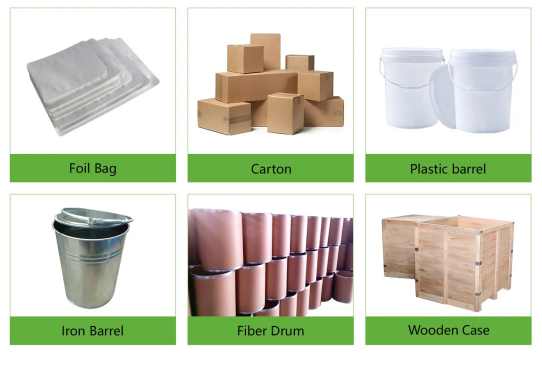Overview of Cobalt Phosphide Co2P Powder
Cobalt phosphide is a gray spiculate. Its relative density (15℃) is 6.14. The melting point is 1386 ℃. Cobalt phosphide is soluble in nitric acid, aqua regia but insoluble in water. Cobalt phosphide (CO2P) is an intercalation compound formed by a phosphorus source entering the transition metal cobalt lattice. Cobalt phosphide can be used in magnetism, lithium battery anode materials, hydrogenation catalysis and photocatalytic degradation, etc. Cobalt phosphide is a kind of semiconductor material with low bandgap, high thermal stability, chemical stability, strong electrical conductivity and efficient catalytic performance, extremely meet the requirements of the preparation of an efficient water decomposition catalyst, which is a kind of efficient, stable and cheap transition metal phosphide.

Product Performance of Cobalt Phosphide Co2P Powder
Cobalt phosphide is a compound with an antispinel structure composed of Co and P. It is a mixture of the elements Co and P. The chemical formula is Co2P. Its chemical formula is Co2P, and its molecular weight is 121.73. Cobalt phosphide is a solid, black powder at room temperature, insoluble in water and not easily oxidized by air. It can be stabilized in air and its melting point is 247℃. Cobalt phosphide has good electrical conductivity and magnetic properties. At room temperature, it has a conductivity of about 10^6S/m and is ferromagnetic. The resistivity of this material decreases as the temperature increases, and at temperatures up to about 100 K, it has a resistivity of 0.02 Ω-m.
Technical Parameter of Cobalt Phosphide Co2P Powder
Product Name | MF | Purity | Particle Size | Melting Point | Volume Density | Color |
Cobalt Phosphide | Co2P | 99.99% | -60 mesh | 1386℃ | 6.14 | Gray |
How is Cobalt Phosphide Co2P Powder Produced?
There are four ways to prepare cobalt phosphide according to the phosphorus source. In the first, trityl phosphorus (TOP) is used as a phosphorus source to synthesize phosphates, which can be obtained in organic mixtures by thermal decomposition of metal phosphates, which is the oil bath method. When tri octyl phosphorus is used as the phosphorus source in the Ullmann reaction, it is easy to cause the agglomeration of the generated cobalt phosphate nanowires. Second, the application of hydrogen reduction of metal phosphates, due to phosphorus and oxygen bond energy is stronger, if you want to destroy the keys, phosphorus and oxygen metal and the formation of phosphorus key only occur under high temperature, however, this process is easy to form the metal particles, and the formation of metal particles has greatly enhanced the adsorption of hydrogen, metal overflow phosphate at the same time, led to the reduction of phosphate to the phosphide. However, due to the high sintering temperature, the synthesis of phosphates by phosphate usually results in the formation of large grains for the most part. Third, the application of a relatively mild and simple hypophosphite route, that is, through high-temperature decomposition (300-400℃) heating decomposition of sodium hypophosphite, in situ generations of toxic PH3 will reduce the metal source. Fourthly, the metal phosphide was prepared by using element phosphorus under hydrothermal conditions (140-200℃). The element phosphorus had white phosphorus, yellow phosphorus and red phosphorus as phosphorus sources, which may cause the agglomeration of the prepared cobalt phosphide and thus could not control the size and composition of the particles.
Applications of Cobalt Phosphide Co2P Powder
Due to its properties such as high melting point, good electrical conductivity and magnetic properties, cobalt phosphide is used in a wide range of applications in the following fields:
Electronics and microelectronics: Cobalt phosphide's high resistivity and good thermal stability make it an ideal material for use in electronics and microelectronics. It can manufacture high-temperature electronic devices, interconnect wires for integrated circuits, and so on. In addition, due to its good electrical conductivity and magnetic properties, cobalt phosphide is also used to manufacture magnetic storage components and sensors.
Catalysis: Cobalt phosphide has good catalytic properties and can be used as a catalyst for a variety of chemical reactions, such as CO oxidation and methane oxidation dehydrogenation. Its high stability and corrosion resistance make it an ideal catalyst carrier material.
Energy: Cobalt phosphide is a good material for energy storage. It has high energy density and good cycle life and can be used to manufacture batteries and supercapacitors. In addition, cobalt phosphide can also be used to manufacture electrolyte membranes for fuel cells.
Magnetic materials: Because cobalt phosphide is ferromagnetic, it is widely used in magnetic materials. It can be used to manufacture magnetic recording materials, magnetic sensors, magnetic random memories, and so on. In addition, cobalt phosphide can also be used to manufacture polymer composite material reinforcement and modifiers.
Other applications: Cobalt phosphide can also manufacture colorants, coatings, and surface treatment agents for glass and ceramics. In addition, it can be used as a catalyst carrier material in the field of environmental protection.

NANOTRUN(www.rboschco.com) is a trusted global chemical material supplier & manufacturer with over 12-year-experience in providing super high-quality chemicals and nanomaterials, including boride powder, nitride powder, graphite powder, sulfide powder, 3D printing powder, etc.
The company has a professional technical department and Quality Supervision Department, a well-equipped laboratory, and equipped with advanced testing equipment and after-sales customer service center.
If you are looking for high-quality Cobalt Phosphide Co2P Powder, please feel free to contact us or click on the needed products to send an inquiry.

Packing of Cobalt Phosphide Co2P Powder
Vacuum packing, 100g, 500g, or 1kg/bag, 25kg/barrel, or as you request.
We have many different kinds of packing which depend on the quantity.

Payment Methods of Cobalt Phosphide Co2P Powder
L/C, T/T, Western Union, Paypal, Credit Card etc.
Shipment of Cobalt Phosphide Co2P Powder
By sea, by air, by express as soon as possible once payment receipt
Q1
What are the physical properties of cobalt phosphide powder?
Answer: Cobalt phosphide powder usually appears as black or dark gray powder with high density and hardness. It has good electrical conductivity and thermal stability.
Q2
What are the chemical properties of cobalt phosphide powder?
Answer: Cobalt phosphide powder has good chemical stability at room temperature and is not easy to react with water, acid, etc. But at high temperatures or under certain conditions, it may react with certain elements or compounds.
Q3
What effect does the purity of cobalt phosphide powder have on its performance?
Answer: The purity of cobalt phosphide powder has an important impact on its performance. High-purity cobalt phosphide powder has better electrical conductivity, thermal stability and chemical stability, helping to improve the performance and reliability of electrical components.
Q4
What should you pay attention to when using cobalt phosphide powder?
Answer: When using cobalt phosphide powder, care must be taken to avoid prolonged contact with air to prevent oxidation. At the same time, the reaction temperature and time need to be controlled to ensure the synthesis of high-quality cobalt phosphide powder. In addition, corresponding safety operating procedures should be followed when using cobalt phosphide powder.
Q5
What are the advantages of cobalt phosphide powder compared to other materials?
Answer: Compared with other materials, cobalt phosphide powder has excellent electrical conductivity, thermal stability and chemical stability. These advantages make cobalt phosphide powder have unique application value in electrical components, catalysts and other fields. In addition, cobalt phosphide powder also has higher hardness and density, allowing it to have better performance in certain specific application scenarios.




